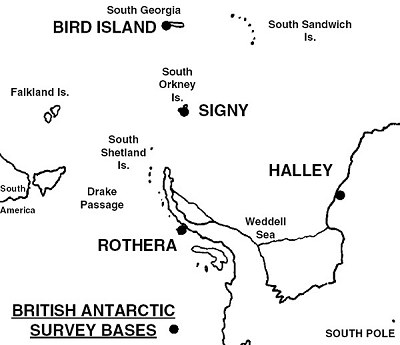
| Glasgow Digital Library | Voyage of the Scotia | BRUCE | PEOPLE | SHIP | ANTARCTIC | INDEX |
|---|
'It seems extremely likely, if a set of permanent stations were established in the Antarctic regions, with first class equipment, thoroughly trained observers and not too few of them, that we might find the key for forecasting weather not only in the Southern Hemisphere, but also, at least to some extent, that of the Northern Hemisphere also.
William Speirs Bruce

There are now 25 research stations in the Antarctic operated by 18 countries. The largest is the American base at McMurdo Sound, with 300 personnel in winter and 1,200 in the Antarctic summer. Bruce would have been impressed by the laboratories, recording instruments, skidoos, satellite links, fax machines and comparative luxury of the bases in the south today.
Britain's contribution is in the hands of the British Antarctic Survey (BAS), one of the most respected scientific teams in the Antarctic. The BAS is based in Cambridge. It is funded by the National Environmental Research Council (NERC) of the Office of Science and Technology which is part of the Department of Trade and Industry.
The BAS has three permanent bases in the Antarctic - Rothera, Halley and Bird Island in South Georgia. (The personnel at Bird Island were captured by Argentinian forces during the 1982 Falklands War.) South Georgia is now administered by the BAS.
| Glasgow Digital Library | Voyage of the Scotia | BRUCE | PEOPLE | SHIP | ANTARCTIC | INDEX |
|---|